Weather monitoring observation at Co. Chajnantor by Chilean Department of Water Resources has started
Co. Chajnantor is located in the northern Andes Mountains, which run north-south through Chile, and is an important meteorological data measurement point because of its easy accessibility despite its high elevation and its relative proximity to the Amazon rainforest. The TAO project has long regarded contribution to global environmental issues as an important pillar of the project, and has been studying the effective use of meteorological observations to improve the accuracy of astronomical observation data.
In recent years, the Republic of Chile has also been focusing on the use of natural energy and monitoring the climate and environment, under the growing concern for global environmental issues. As part of this effort, the Chilean Ministry of Public Works, Department of Water Resources (Direccion General de Aguas, Ministerio de Obras Publicas, DGA) has installed and operates weather monitoring equipment throughout Chile.
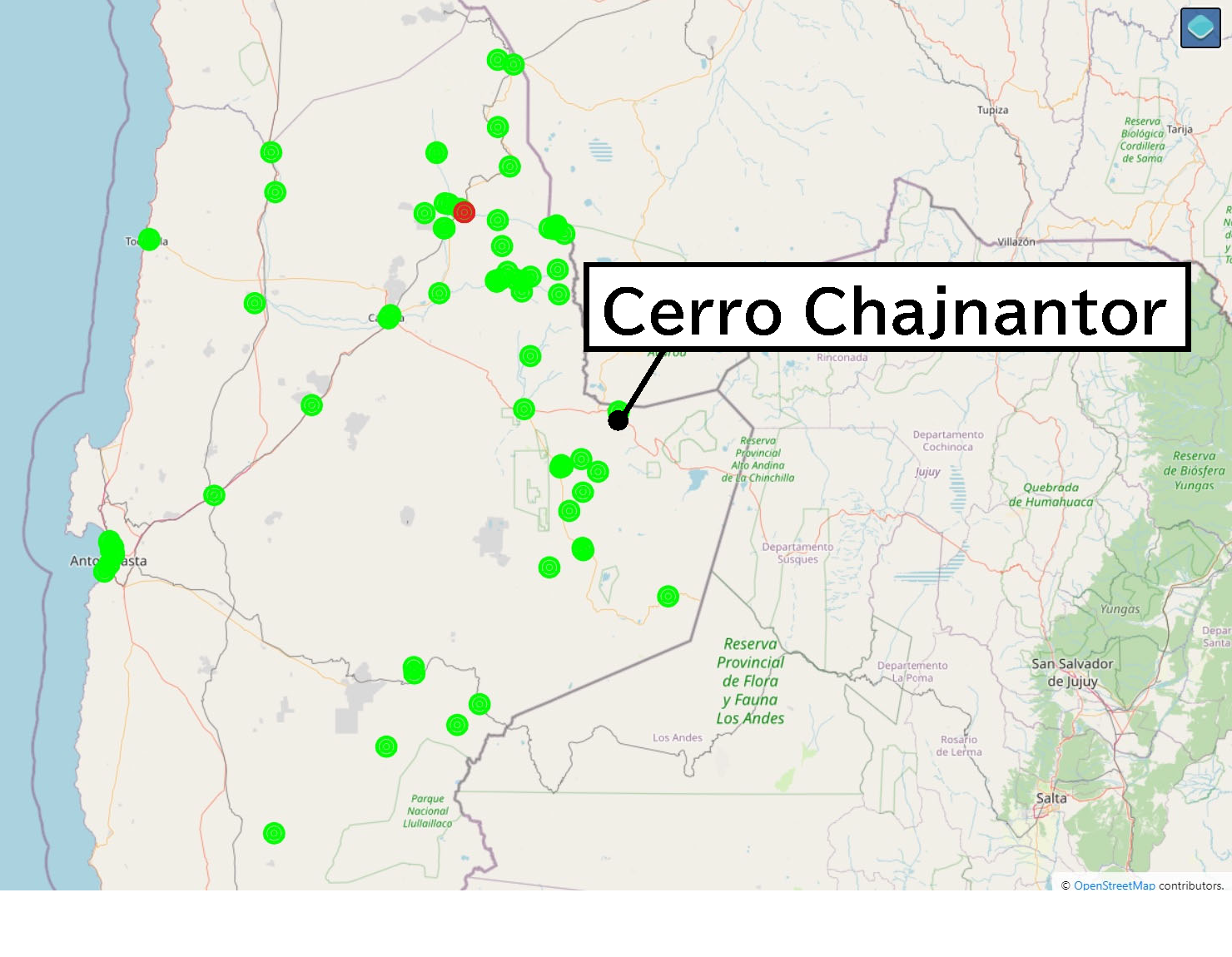
| |
▲Fig. 1. Location of DGA weather monitoring equipment installed near Co. Chajnantor (green: in operation, red: at a standstill). From the website of DGA.
|
After discussions with Prof. Yoshikawa of the University of Alaska, USA, who is conducting joint research on the frozen soil at the TAO installation site, both sides confirmed that progress in their research was expected, and TAO agreed to install weather monitoring equipment by DGA.
Specifically, measuring instruments such as temperature, humidity, anemometer, radiometer, barometer, and precipitation gauge will be installed at two locations, one near the summit of Co. Chajnantor and the other in the middle of the mountain, to create a system that can acquire weather data in real time via satellite.
DGA will develop and install the system, and TAO will be responsible for supporting the installation of the equipment and responding to emergencies during the operational phase. A memorandum of understanding was signed in October 2021 to this effect, and on-site construction was carried out from January to February 2022. The equipment is working properly, and obtained data is provided to the DGA as well as to the National Oceanic and Atmospheric Administration (NOAA) for worldwide release.
TAO plans to utilize this data for monitoring permafrost conditions, which is conducted in collaboration with Prof. Yoshikawa. During TAO's astronomical observation operations, the data will also be used to confirm and predict the astronomical observation environment and to control data quality, in conjunction with data from the atmospheric CO2 measurement instrument to be installed at the summit facility.
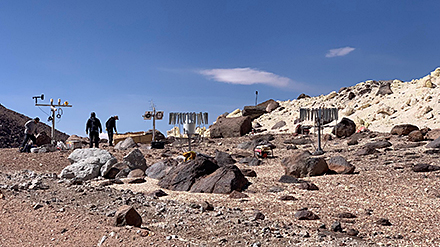
| |
▲Fig. 2. Weather monitoring equipment installed in the middle of Co. Chajnantor
|
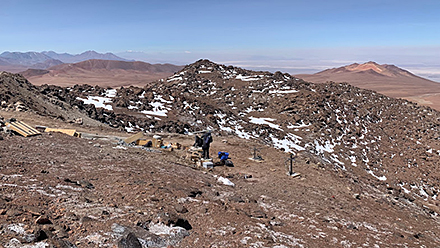
| |
▲Fig. 3. Weather monitoring equipment being installed near the summit of Co. Chajnantor
|
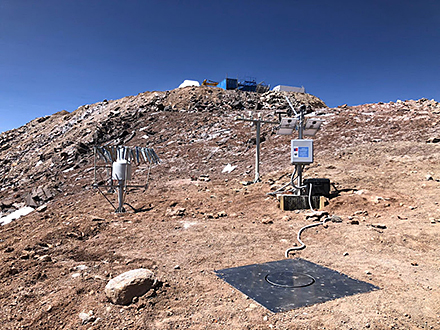
| |
▲Fig. 4. Installed summit weather monitoring equipment; we can see mini-TAO telescope on the cliff.
|
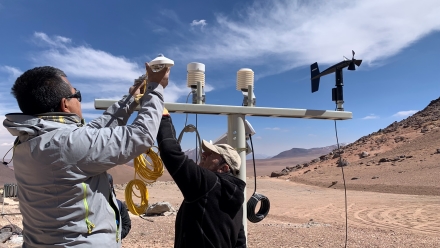
| |
▲Fig. 5. DGA researchers installing weather monitoring equipment in the middle of Co. Chajnantor. The right person is Dr. Gino Casassa Rogazinski, head of DGA glaciology unit.
|
|






